Details on the Toyota Tundra have been slowly trickling out since its debut in Chicago last year, and finally, the manufacturer's display at the Detroit Auto Show put all the goods for our inspection. This, along with the recently-released specs, has given us a better idea of how the Tundra might stack up against the competition.
A recent print rag showed up in our mailbox with the breathless proclamation that the Tundra "could be the truck that breaks the Detroit 3's back". That's maybe a bit premature; as we've seen, the Tundra has some advantages and, yes, some potential drawbacks when compared to competing products from the Motor City.
Keep reading for our opinion and analysis of the Tundra's underpinnings, complete with photos from our gallery.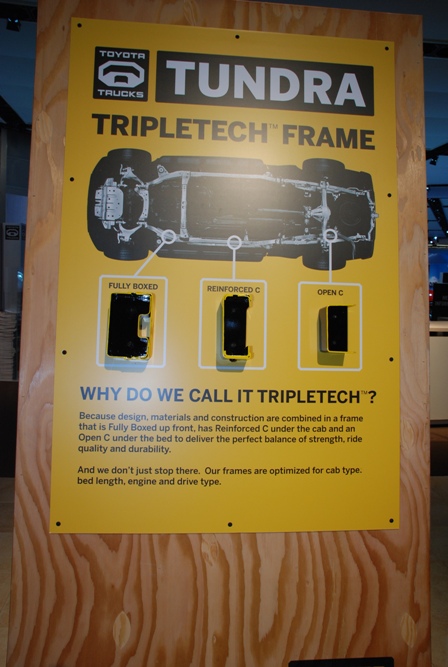
Toyota made a big deal about the construction of the Tundra's frame, but to be honest, we're not sure that it matches up to the structures of the competition.
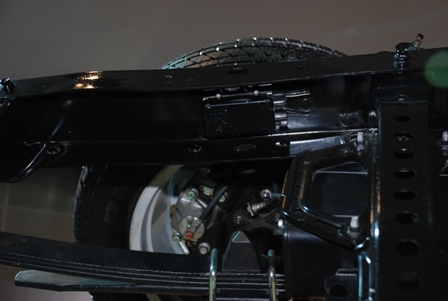
Where as the Tundra makes use of open C-channels under the bed, closed frame rails are used by Dodge, Ford, and GM on their newest designs. Closed sections, of course, are generally stronger and stiffer for the same mass.
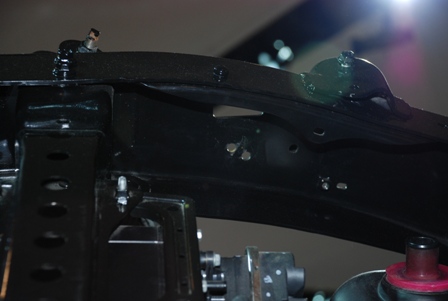
Does this mean that the Tundra's frame is weaker than other comparable trucks? Certainly not -- but it is interesting that the company choose to use a construction technique that has been abandoned by the Big 3.
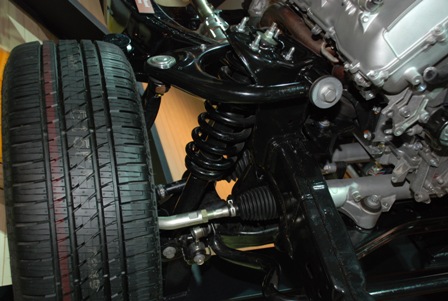
Up front, we see the same double-wishbone and coil-over shock design that is now being utilized on trucks produced by the Big 3 (torsion bars having been replaced largely because they're difficult to package and require beefy reaction points).
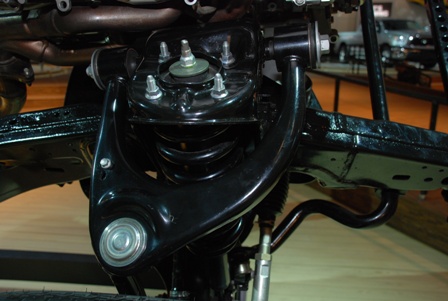
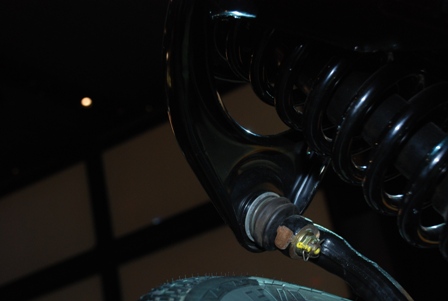
We'd prefer to see a full tubular upper control arm (as has been used on-and-off in recent years by the Big 3), but stamped upper members should prove to be plenty strong for the task.
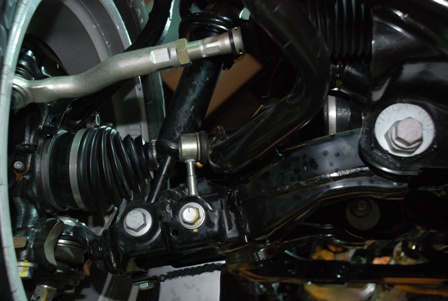
Down below, Toyota has eschewed the cast aluminum lower control arms currently in favor, and instead used a weldment formed from stamped steel sections. We can't -- and won't -- make a definitive statement on which is "better"; it's simply interesting to note the divergent path taken by Toyota.
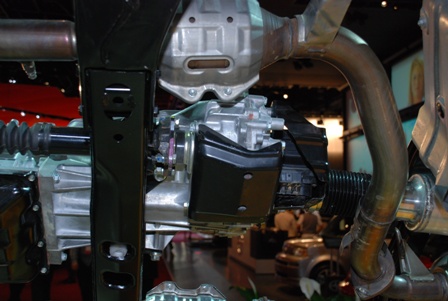
Seeing the transfer case tucked up tightly into the frame made us smile, as this greatly reduces the change of getting high-centered. We'd prefer to see a skidplate that's tied into the crossmember, however; that would improve the chances of smoothly gliding over a protrusion such as a stump or rock.
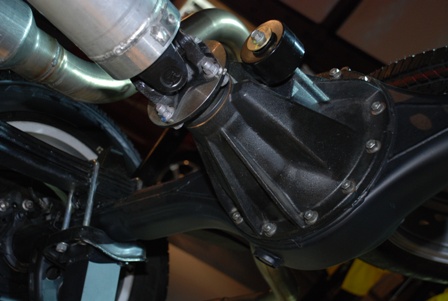
Out back, a 4" aluminum driveshaft carries torque to a Hotchkiss-style rear axle. The large diameter is necessary to avoid vibration at high speeds with the optional 4.30:1 rear gears; aluminum is used to keep the weight somewhat reasonable, and follows the trend set by other manufacturers.
The axle housing is manufactured from stamped steel. This has the disadvantage of being potentially less resistant to direct hits on the "pumpkin" than those axles using a cast center section; on the other hand, this type of construction should be stronger and stiffer than those Salisbury axles that use tubes that are pressed and spot-welded in place (they have a bad habit of bending or separating when abused). Keep all four wheels on the ground, and either design will work well.
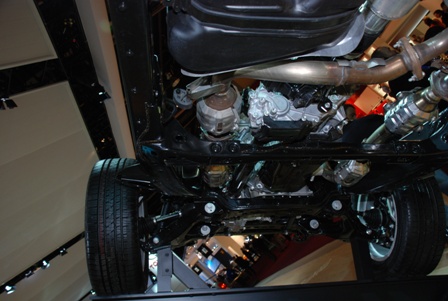
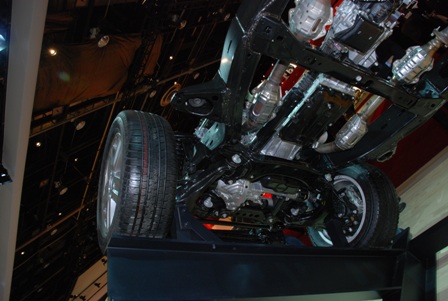
Note the use of dual catalytic converters on each side, indicating that a bit of extra effort was required to clean up the powerful iForce V8.
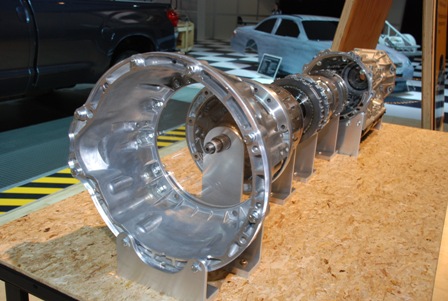
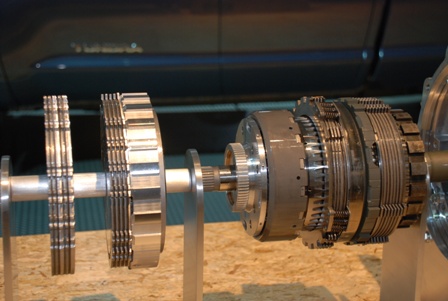
Aisin supplies the six-speed transmission, which is a rarity in the Tundra's class (GM's new six-speed will be available in the Sierra Denali). It gives a broader gear spread than the competition's four- and five-speed boxes, which when combined with the iForce's huge power (a class-leading 381 HP and 403 lb-ft) will out-accelerate and out-pull anything in its class. Fuel economy isn't anything to write home about, but what'd you expect from a three-ton vehicle with nearly 400 HP?
Given that automotive transmissions are traditionally the weakest link in a half-ton truck's drivetrain, we'll be anxiously awaiting durability reports from the field.

Toyota has a reputation for straightforward and functional interior design -- so, um, what happened here? The radio is merely a mild offender in an interior that might be the worst we've seen in a pickup truck since GM's atrocious '88-'94 full-size trucks. The Americans seem to have really trumped Toyota here, and that's not something we thought we'd be saying in 2007.
So, what's the verdict? Will Toyota take market share away from the Big 3, or will the new Tundra suffer from the same minimal impact as its predecessor? Solidly in Toyota's corner are the Tundra's killer drivetrain, and the huge brakes (13.9" in front and 13.6" out back), are also a big plus in our book (those inclined to run wheels 17" or smaller probably feel otherwise). The chassis, however, may not be up to snuff, and the interior is disappointing to say the least. We'll leave the topic of exterior styling alone, as: 1) it's strictly a personal matter; and 2) in our opinion, the industry in general has collectively proceded too far down the pseudo-big-rig path.
We don't think that Toyota will have a problem selling all 200,000 Tundras that it plans to build each year, but gaining share beyond that will not be a battle won in the short term. The Big 3 will not cede ground as it had in the passenger car market over the past three decades. Fortunately, we consumers will all benefit from this latest shot in America's largest vehicle segment.
A recent print rag showed up in our mailbox with the breathless proclamation that the Tundra "could be the truck that breaks the Detroit 3's back". That's maybe a bit premature; as we've seen, the Tundra has some advantages and, yes, some potential drawbacks when compared to competing products from the Motor City.
Keep reading for our opinion and analysis of the Tundra's underpinnings, complete with photos from our gallery.

Toyota made a big deal about the construction of the Tundra's frame, but to be honest, we're not sure that it matches up to the structures of the competition.

Where as the Tundra makes use of open C-channels under the bed, closed frame rails are used by Dodge, Ford, and GM on their newest designs. Closed sections, of course, are generally stronger and stiffer for the same mass.

Does this mean that the Tundra's frame is weaker than other comparable trucks? Certainly not -- but it is interesting that the company choose to use a construction technique that has been abandoned by the Big 3.

Up front, we see the same double-wishbone and coil-over shock design that is now being utilized on trucks produced by the Big 3 (torsion bars having been replaced largely because they're difficult to package and require beefy reaction points).


We'd prefer to see a full tubular upper control arm (as has been used on-and-off in recent years by the Big 3), but stamped upper members should prove to be plenty strong for the task.

Down below, Toyota has eschewed the cast aluminum lower control arms currently in favor, and instead used a weldment formed from stamped steel sections. We can't -- and won't -- make a definitive statement on which is "better"; it's simply interesting to note the divergent path taken by Toyota.

Seeing the transfer case tucked up tightly into the frame made us smile, as this greatly reduces the change of getting high-centered. We'd prefer to see a skidplate that's tied into the crossmember, however; that would improve the chances of smoothly gliding over a protrusion such as a stump or rock.

Out back, a 4" aluminum driveshaft carries torque to a Hotchkiss-style rear axle. The large diameter is necessary to avoid vibration at high speeds with the optional 4.30:1 rear gears; aluminum is used to keep the weight somewhat reasonable, and follows the trend set by other manufacturers.
The axle housing is manufactured from stamped steel. This has the disadvantage of being potentially less resistant to direct hits on the "pumpkin" than those axles using a cast center section; on the other hand, this type of construction should be stronger and stiffer than those Salisbury axles that use tubes that are pressed and spot-welded in place (they have a bad habit of bending or separating when abused). Keep all four wheels on the ground, and either design will work well.


Note the use of dual catalytic converters on each side, indicating that a bit of extra effort was required to clean up the powerful iForce V8.


Aisin supplies the six-speed transmission, which is a rarity in the Tundra's class (GM's new six-speed will be available in the Sierra Denali). It gives a broader gear spread than the competition's four- and five-speed boxes, which when combined with the iForce's huge power (a class-leading 381 HP and 403 lb-ft) will out-accelerate and out-pull anything in its class. Fuel economy isn't anything to write home about, but what'd you expect from a three-ton vehicle with nearly 400 HP?
Given that automotive transmissions are traditionally the weakest link in a half-ton truck's drivetrain, we'll be anxiously awaiting durability reports from the field.

Toyota has a reputation for straightforward and functional interior design -- so, um, what happened here? The radio is merely a mild offender in an interior that might be the worst we've seen in a pickup truck since GM's atrocious '88-'94 full-size trucks. The Americans seem to have really trumped Toyota here, and that's not something we thought we'd be saying in 2007.
So, what's the verdict? Will Toyota take market share away from the Big 3, or will the new Tundra suffer from the same minimal impact as its predecessor? Solidly in Toyota's corner are the Tundra's killer drivetrain, and the huge brakes (13.9" in front and 13.6" out back), are also a big plus in our book (those inclined to run wheels 17" or smaller probably feel otherwise). The chassis, however, may not be up to snuff, and the interior is disappointing to say the least. We'll leave the topic of exterior styling alone, as: 1) it's strictly a personal matter; and 2) in our opinion, the industry in general has collectively proceded too far down the pseudo-big-rig path.
We don't think that Toyota will have a problem selling all 200,000 Tundras that it plans to build each year, but gaining share beyond that will not be a battle won in the short term. The Big 3 will not cede ground as it had in the passenger car market over the past three decades. Fortunately, we consumers will all benefit from this latest shot in America's largest vehicle segment.
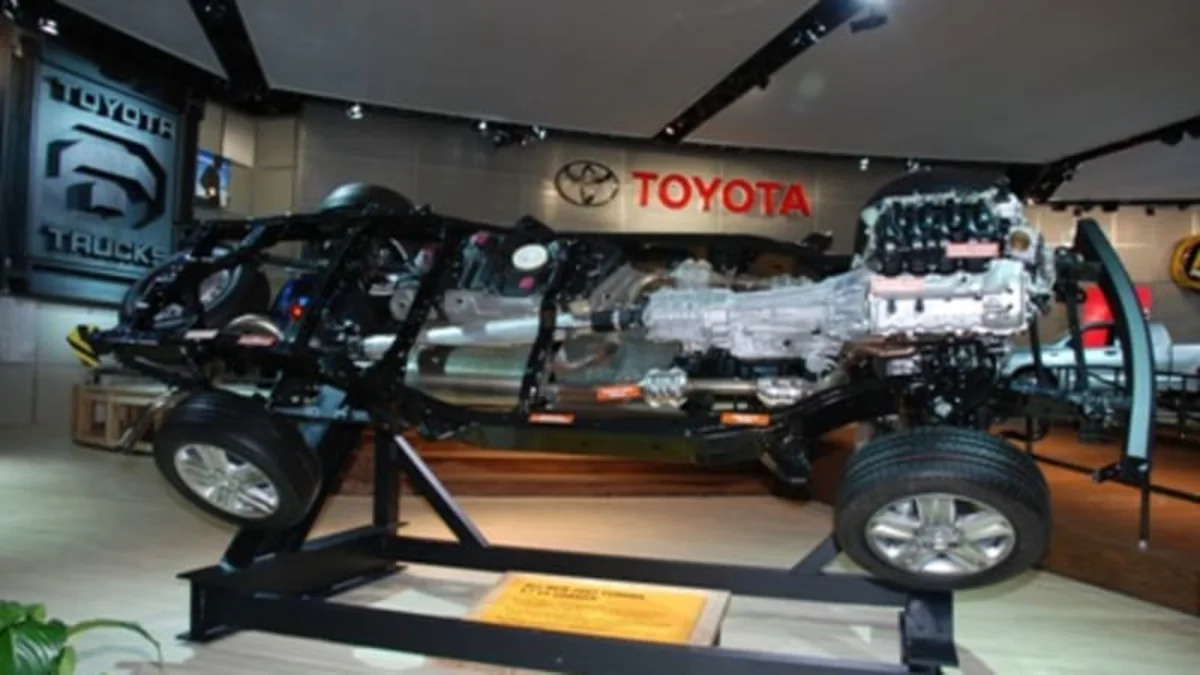

Sign in to post
Please sign in to leave a comment.
Continue